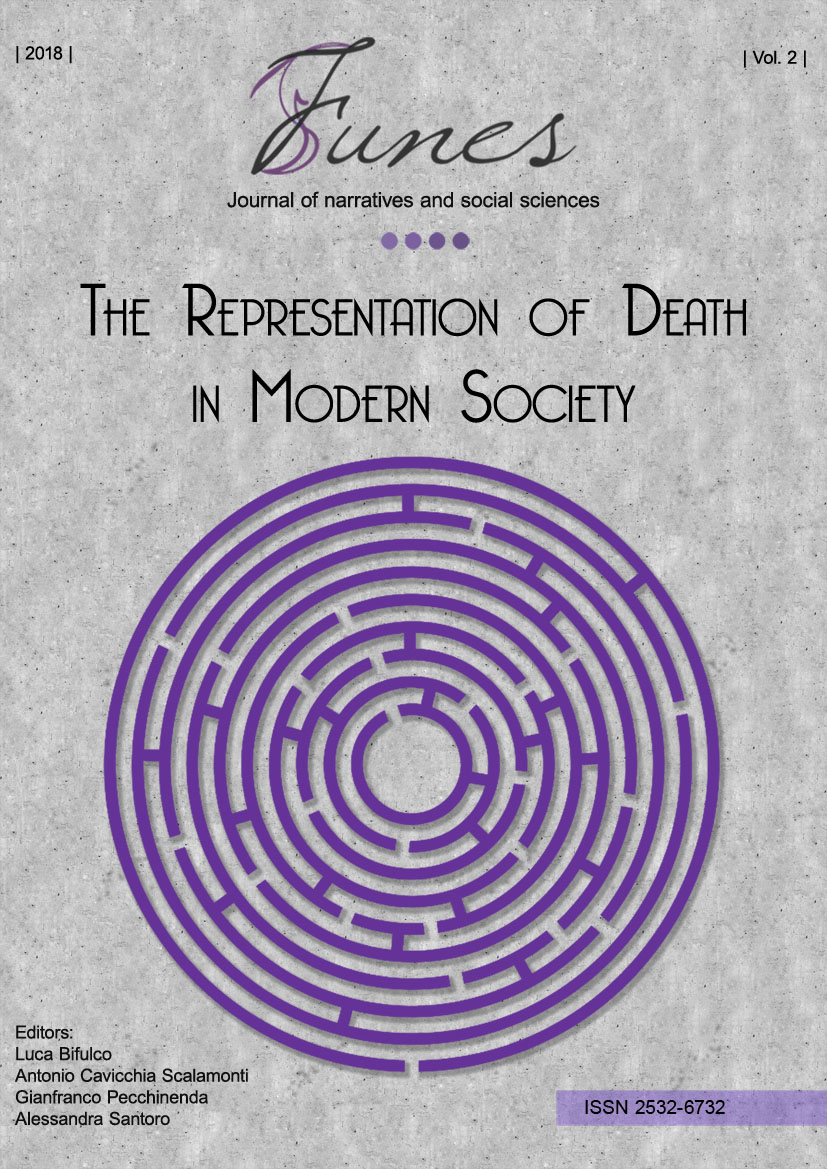Introduzione al Vol. 2 "The representation of death in modern society"
Abstract
Death represents one of those few experiences that every society throughout history faces. It has been defined as the marginal situation par excellence (Berger, 1969). Since it cannot be known concretely, it exists at the margins of every symbolic system, of any solid structure of meaning that a society can possess.Conceiving one’s own mortality and coping with the death of loved ones bears a threat to the typical way of understanding and defining the social world. The awareness of death is difficult to handle, since it sheds light on the whole existence of those who must cope with it. Therefore, every group as well as every individual, faced with the end of human life, the loss and the mourning process, must also ask oneself about the sense and the meaning of death in order to face its scope.
Downloads
Riferimenti bibliografici
Bauman, Z. (1992). Mortality, Immortality and Other Life Strategies. Cambridge: Polity Press.
Berger, P. (1969). The Sacred Canopy: Elements of a Sociological Theory of Religion. New York: Anchor Books Edition.
Cavicchia Scalamonti, A. (1991). Tempo e morte. Napoli: Liguori.
Cavicchia Scalamonti, A. (2007). La morte. Quattro variazioni sul tema. S. Maria C.V.: Ipermedium libri.
Cavicchia Scalamonti, A. (2015). L’illusione senza avvenire. S. Maria C.V.: Ipermedium libri.
Duteil-Ogata, F. (2012). Emerging Burial Spaces and Rituals in Urban Japan. In N. Aveline- Dubach (ed.), Invisible Population: The Place of the Dead in East-Asian Megacities (pp. 50-73). Plymouth: Lexington Books.
Elias, N. (1985). The Loneliness of the Dying. Oxford: Blackwell.
Gibson, M. (2007). Death and Mourning in Technologically Mediated Culture. Health Sociological Review, 16(5), 415-424.
Giddens, A. (1991). Modernity and Self-Identity. Cambridge: Polity Press.
Gorer, G. (1955). The Pornography of Death. Encounter, 5, 49-52.
Guthke, K. S. (1999). The Gender of Death: A Cultural History in Art and Literature. Cambridge, UK: Cambridge University Press.
Mellor, P.A., & Shilling, C. (1993). Modernity, Self-Identity and the Sequestration of Death. Sociology, 27(3), 411-431.
Pecchinenda, G. (2017). The Neuronal Identity: Strategies of Immortality in Contemporary Western Cultures. In Michael Hviid Jacobsen (Ed), Postmortal Society. Towards a Sociology of Immortality (pp. 138-155). New York: Routledge.
Seale, C. (1998). Constructing Death: The Sociology of Dying and Bereavement. Cambridge: Cambridge University Press.
Thomas, L.-V. (1975). Anthropologie de la mort. Paris: Payot.
Urry, J. (2000). Sociology Beyond Societies: Mobilities for the Twenty-First Century. London & New York: Routledge.
Urry, J. (2007). Mobilities. Cambridge: Polity Press.
